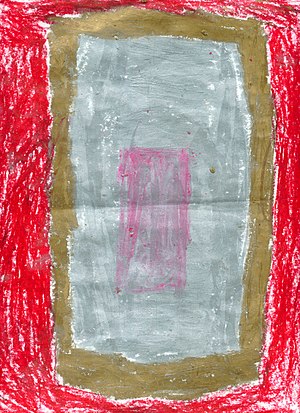
When Blair Holt, a 16-year-old South Side teen, was fatally wounded after shielding a classmate from gunshots on a CTA bus in 2006, news media from all over the world reported his death. A few Chicago residents were inspired to take action.
Maurice Willis, 31, joined with others to create Lucid Life Works. Willis, who is from the South Side, said Holt’s murder shocked him.
“I used to preach that people weren’t doing enough, and then I took a look at myself. I realized I wasn’t doing enough,” said Willis.
As violence among teens in Chicago began to increase, Willis said he also noticed that the violence was taking place during after-school hours.
“We saw that most of the violence that involved youth could be attributed to the lack of outlets they had,” said Nina Bell, who worked to organize Lucid Life Works with Willis. “Kids don’t understand the power they have, and we wanted to be able to show them.”
In 2009, Willis, in collaboration with Aaron Richardson, 29, of the South Side and Bell, 27, also from the South Side, started Lucid Life Works, a nonprofit creative arts organization, as a means to curb violence among teens by providing them with an effective outlet through creative arts.
The organization fights to show the importance of creative art programs for young people, despite the nationwide budget cuts in art and music classes in schools.
Lucid Life Work’s mission is to use the arts to convey a message of inspiration, friendship and strong interpersonal skills while instilling a sense of hope in urban youth around Chicago, according to the organization’s mission.
“Our mission is constantly evolving. Our main, consistent goal is to inspire and awaken our youth,” said Richardson, co-executive director of the organization.
Richardson said Lucid Life Works originally centered around music.
“We wanted to give kids exposure to music outside of just being a rapper. We wanted to give them access to other areas including the experience of managing the business from behind the scenes,” said Richardson.
He said they then began to evolve their vision to include other aspects of the creative arts based on the need “to awaken the spark that everyone is born with: the need to create.”
Richardson said he developed a love for music at the age of four when he began playing the saxophone. The instrument allowed him to express emotions he said he couldn’t have expressed otherwise.
An emphasis on music and art is shared on the federal, state and local levels of government.
“The arts and humanities define who we are as a people, First Lady Michelle Obama said on the President’s Committee on the Arts and Humanities’ website.
“That is their power — to remind us of what we each have to offer, and what we all have in common. To help us understand our history and imagine our future. To give us hope in the moments of struggle and to bring us together when nothing else will.”
Richardson said music was both his escape and his salvation as a child.
“Whenever I had issues at home I would go in my room, close the door, and play that horn for hours,” said Richardson. “Music played a big role in my development as a person.”
Bell, who oversees marketing and communications at the nonprofit, said Lucid Life Works opened a camp and art classes over the summer in Rockport for teenagers.
“Camping is just another opportunity to expose kids to a lot of things they wouldn’t have been exposed to in the inner city,” said Bell.
“Their everyday environment is mentally and spiritually distracting; police sirens, gun shots, dysfunctional family life and negative peer influences. We took them out of that environment to open their eyes to a new world of opportunities and a different way to view situations and the environment.”
Besides hiking and archery, the teens also had photography class in which they took pictures of nature in the hopes of giving them a better appreciation of life, said Bell.
“Kids are more self-destructive now influenced by their peers and family members,” said Richardson. “We wanted to turn that negative energy into positive energy.”
Willis said art makes students more well rounded because it gives them a lesson about people and culture and how they come together.
Exposing children to the arts has been broadly endorsed by many organizations.
According to an article entitled, “The Effects of Race, Poverty and Equal Opportunity in America,” by Eric Cooper, president and founder of the National Urban Alliance for Effective Education, “Arts education enables those children from a financially challenged background to have a more level playing field with children who have had those enrichment experiences.”
Willis said art is valuable because it teaches critical thinking when trying to interpret an artist’s intent as he created an artwork. He said art teaches time-management and discipline to the artist.
“If you want to be great at your craft, you have to do your due diligence and put in the time,” said Willis, a Columbia College Chicago graduate with a degree in music education and music business.
“This discipline transfers over to your job as an adult serving as an invaluable life skill.”








Be First to Comment